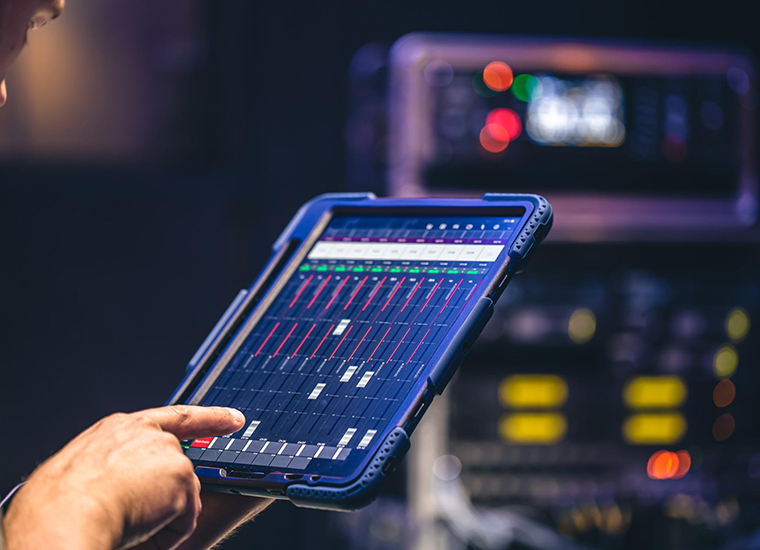AGP China Technology Report - Perception Systems (Sensors & Computer Vision)
Table of Contents
Page Section
03 Technology Overview
06 Historical Development Timeline
08 Product Differentiation
15 China Technology Ecosystem
18 Sino-Foreign Collaboration
22 Common Applications In China
27 Government Policy Support
30 Impact On Market Incumbents
32 Final Conclusion
33 Appendices
1.1 Global Snapshot
Definition and Core Technologies
Perception systems in robotics encompass the suite of sensors and computational processes that enable robots to interpret and interact with their environment. These systems are pivotal for tasks such as navigation, object recognition, and manipulation. Key components include:
- Sensors: Devices that detect environmental stimuli. Common types in robotics are:
- Cameras: Capture visual data for image processing.
- LiDAR (Light Detection and Ranging): Measures distances using laser light to create detailed 3D maps.
- Radar: Utilizes radio waves to detect objects and their velocities.
- Ultrasonic Sensors: Employ sound waves to measure proximity to objects.
- Computer Vision: The field that enables machines to interpret visual information. It involves:
- Image Recognition: Identifying objects, patterns, or features within an image.
- 3D Vision: Understanding spatial relationships and depth, often through stereoscopic imaging or depth sensors.
- Machine Learning Algorithms: Enhance the robot's ability to learn from visual data, improving accuracy and adaptability over time.
Global Benchmarks and Market Dynamics
The integration of advanced perception systems has led to significant strides in robotics. Notable developments include:
- Autonomous Vehicles: Companies like Tesla and Waymo have incorporated sophisticated perception systems, combining cameras, LiDAR, and radar to achieve high levels of autonomy.
- Industrial Automation: Firms such as Fanuc and ABB have developed robots with enhanced perception capabilities, facilitating complex tasks like assembly and quality inspection.
- Healthcare Robotics: Surgical robots, like those from Intuitive Surgical, utilize advanced imaging and sensor technologies to perform minimally invasive procedures with high precision.
The global market for robotic perception systems is experiencing robust growth. According to a report by Markets and Markets, the computer vision market is projected to grow from USD 22.28 billion in 2023 to USD 50.98 billion by 2030, at a compound annual growth rate (CAGR) of 12.58%.
1.2 China Snapshot
Market Position and Domestic Capabilities
China has emerged as a formidable player in the robotics industry, particularly in the development and deployment of perception systems. The country's strengths include:
- Manufacturing Prowess: Chinese companies have achieved significant advancements in producing core components such as high-resolution cameras and LiDAR systems, often at competitive price points.
- Leading Firms: Companies like DJI and Hikvision have made substantial contributions to perception technologies, with products ranging from drones with advanced imaging capabilities to sophisticated surveillance systems.
- Research and Development: Institutions such as the Chinese Academy of Sciences are at the forefront of computer vision research, contributing to both theoretical advancements and practical applications.
Policy Initiatives and Industrial Targets
The Chinese government has implemented several policies to bolster the robotics sector:
- Made in China 2025: This strategic plan emphasizes the development of high-tech industries, including robotics, aiming to reduce reliance on foreign technology and enhance domestic innovation.
- Artificial Intelligence Development Plan: Launched in 2017, this plan seeks to position China as a global leader in AI by 2030, with computer vision being a key area of focus.
Application Scaling and Cost-Performance Edge
China's ability to scale applications rapidly, combined with its cost-performance advantage, has led to widespread adoption of robots equipped with advanced perception systems in various sectors:
- Manufacturing: Deployment of robots with sophisticated vision systems for tasks such as welding, assembly, and quality control.
- Logistics: Use of autonomous mobile robots (AMRs) in warehouses, leveraging perception systems for navigation and inventory management.
- Healthcare: Implementation of service robots in hospitals for tasks like delivery and disinfection, utilizing sensors and computer vision for safe operation.
1.3 Strategic Significance and Use Cases
Advancing New Productive Forces
The integration of advanced perception systems in robots is pivotal for the development of "new productive forces" (新质生产力), characterized by:
- Increased Automation: Reducing human intervention in repetitive or hazardous tasks, leading to higher efficiency and safety.
- Enhanced Precision: Enabling robots to perform complex tasks with a high degree of accuracy, essential in industries like electronics and pharmaceuticals.
- Data-Driven Decision Making: Utilizing data collected by perception systems to inform operational strategies and optimize processes.
Alignment with National Goals
The deployment of robots with advanced perception capabilities aligns with China's broader objectives:
- Demographic Shifts: Addressing labor shortages due to an aging population by automating tasks traditionally performed by humans.
- Industrial Upgrading: Transitioning from labor-intensive manufacturing to high-tech, high-value-added production.
- Smart Factories: Facilitating the development of intelligent manufacturing environments where robots and humans collaborate seamlessly.
Policy Relevance and Tech-Industry Integration
The emphasis on perception systems in robotics underscores the Chinese government's commitment to technological innovation as a driver of economic growth. This focus fosters:
- Public-Private Partnerships: Collaboration between government bodies, research institutions, and private enterprises to accelerate development and deployment.
- Standardization Efforts: Establishing industry standards to ensure interoperability and safety in robotic systems.
- Global Competitiveness: Positioning Chinese companies as leaders in the global robotics market through innovation and strategic investments.
In conclusion, perception systems, encompassing advanced sensors and computer vision technologies, are integral to the evolution of robotics. China's strategic initiatives and robust industrial capabilities position it as a key player in this transformative field, with significant implications for various sectors and the broader economy.
AGP Insights
Download PDF.
Your PDF report was sent successfully to your inbox!
Related Insights.











